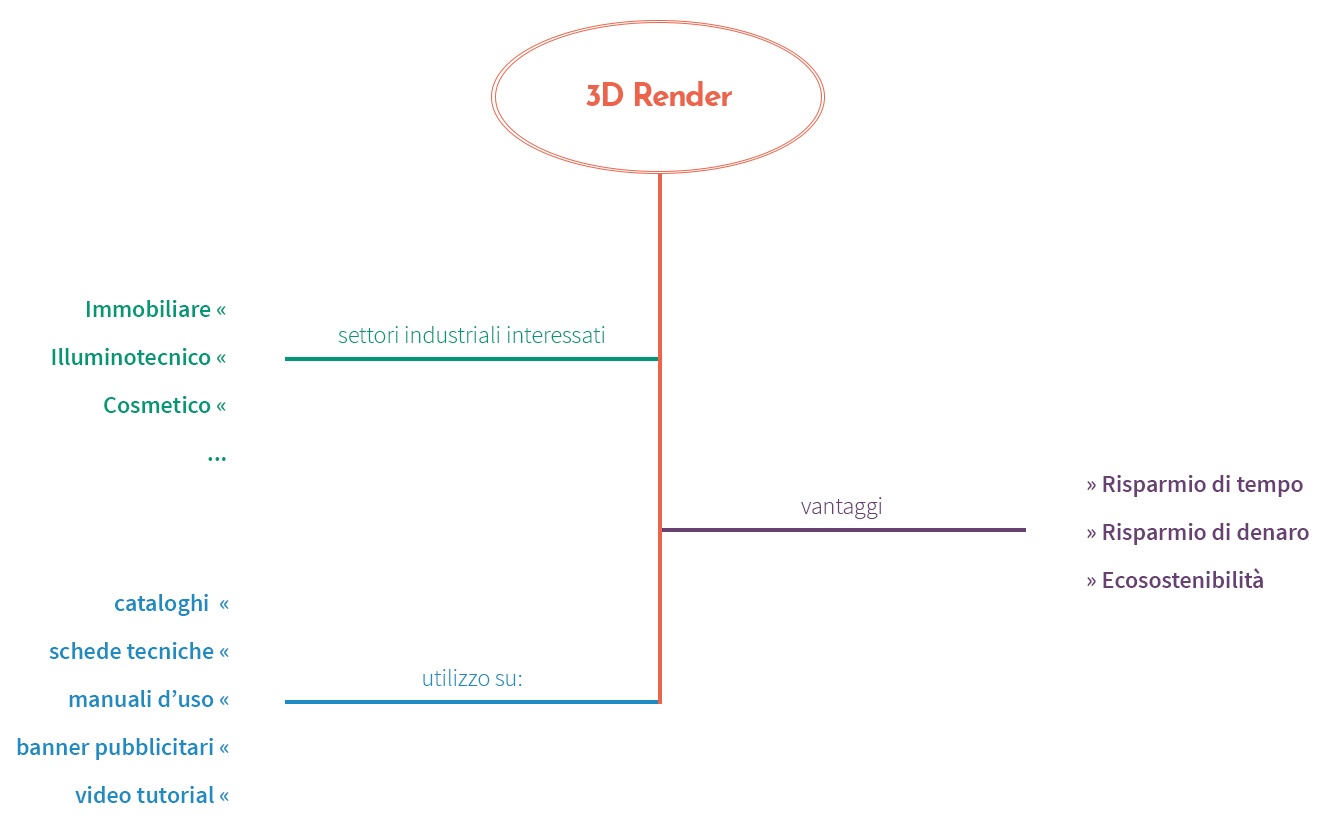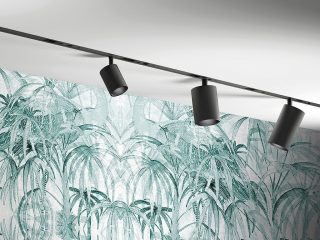— What is 3D render
— Who should use it
— The Benefits
— The sustainable 3D render, the IKEA case
As I illustrated in the previous article (if you missed it click here), the presence of illustrative images is vital within a catalogue, whether it is a technical catalogue, an instruction manual or a product catalogue.
3D Render meets our needs when the products to be illustrated in a catalogue are still technical drawings and have therefore not yet been produced.
Thanks to 3D Render we are able to show photorealistic images (identical to life) of our products that have not yet been developed.
Let us start from the beginning by explaining what a 3D Render is:
What is 3D render
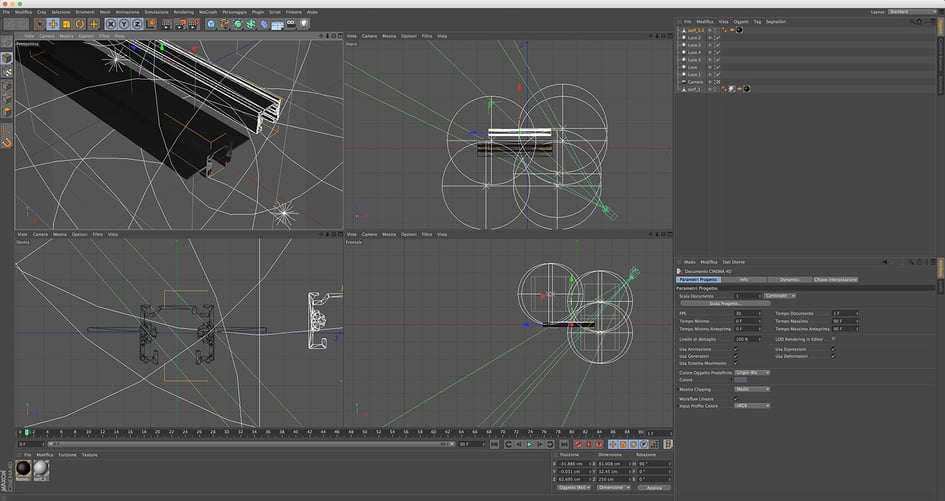 |
| Render development with Cinema 4D |
3D rendering is the process of processing an image on a computer. In principle, the image is modelled three-dimensionally on the basis of project data using a CAD programme (archiCAD, autoCAD), then textures are applied, i.e. the specified materials of the object and the necessary lighting in order to render the environment realistically. Rendering is then carried out, i.e. the process that uses specific programmes (3D Studio Max, Cinema 4D) to obtain a photorealistic image. Depending on the use, the render can undergo further optimisation with Photoshop where the image is post-produced to obtain a result equal to the real thing.
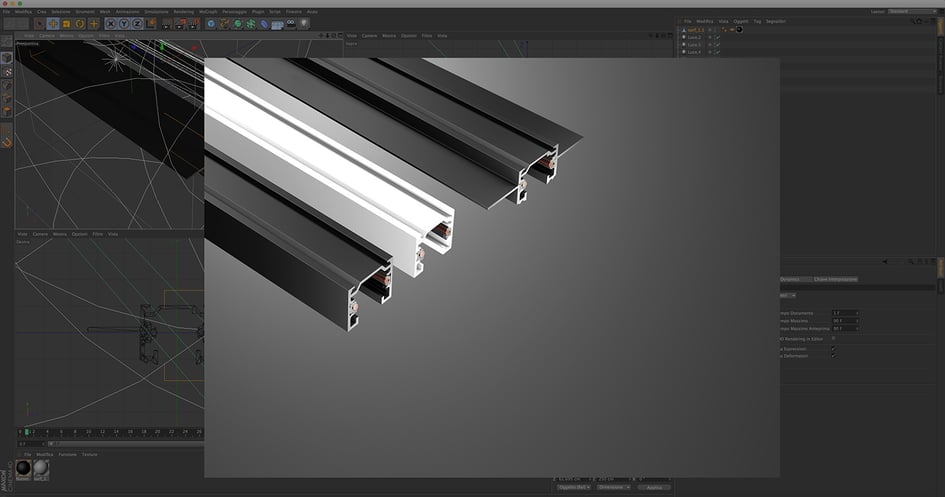 |
| Photorealistic rendering with Cinema 4D |
Who should use 3D Render?
3D rendering can be used in most industries today. Thanks to the evolution of this technology, most industries that design and produce all kinds of products can do without time-consuming photographic sets, thus reducing time and costs. The 3D render can therefore be used for the presentation of architectural projects to delight the buyer with realistic images during all design phases, but it can also be widely used by lighting companies, mechanical engineering companies, furniture factories and many others for the implementation in their catalogues of images that look like the real thing without having to think about the production of the object before it can be presented.
Advantages of using 3D Render
Let’s take a look at a number of excellent reasons why you should also choose 3D Render in place of photography to illustrate your products in the catalogue:
- With 3D Render you can save valuable time
- You can save money
- You can set up photos of environments in an eco-sustainable way
#1 Saving time with 3D Render
Using 3D rendering to create product or environment images for presentation in a catalogue will save valuable time, as it will no longer be necessary to set up photo shoots, which can sometimes take a significant amount of time. In terms of time, not only the real estate, architectural, etc. sectors will be able to save, but also all those industries that make use of projects for the realisation of their products, as they will be able to take advantage of this technology without having to produce the object of interest first. The 3D render requires less time for the realisation of images than the photographic set.
#2 Saving money with 3D Render
Directly proportional is the saving of money, as it will no longer be necessary to rely on experts in the production of an object for the sole purpose of showing it in a catalogue, and above all it will not be necessary to employ technicians for the assembly and disassembly of the furniture (taking the real estate sector into account), designers for the furnishing and photographers for the realisation of the pictures.
#3 3D Renderings are environmentally sustainable, the IKEA case
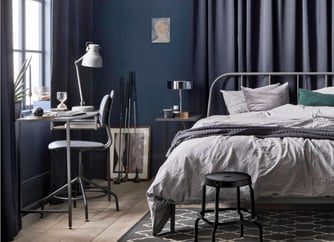 Eco-sustainability is a topic that raises a lot of awareness nowadays, which is why I wanted to spice up this article with one of the pleasant consequences of using 3D Renders. 3D Renders, like many technologies that have recently come into use, succeed in their own small way in reducing the waste that was necessary a few years ago.
Eco-sustainability is a topic that raises a lot of awareness nowadays, which is why I wanted to spice up this article with one of the pleasant consequences of using 3D Renders. 3D Renders, like many technologies that have recently come into use, succeed in their own small way in reducing the waste that was necessary a few years ago.
IKEA, which I take as an example not only because of its notoriety, but because it has always upheld a strong ethic inclined towards eco-sustainability, has chosen to use 3D render technology to illustrate some of its settings that we browse through every day in its catalogues.
IKEA’s choice stems from the desire to avoid setting up new rooms each time with furniture that is destined to be thrown away once the photographic set is finished. Therefore, the Swedish giant’s main aim was not only to save time and money, but above all to find a solution that would prevent it from creating such significant waste just for the duty of creating images for the company’s communication.
Conclusions
In short, 3D rendering is a technology that has been refined to such an extent in recent years that it meets the needs of a constantly growing number of companies. Today, this tool can be used for multiple communication purposes, as we can use it to illustrate our products in catalogues, to replace text in user manuals, to create video tutorials, for TV advertising, for banner ads, for animation, films and so on.
I will therefore conclude with a simple map to fix the topics covered today:



